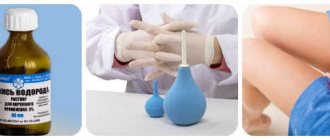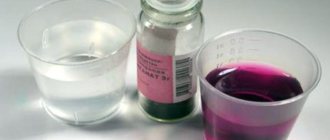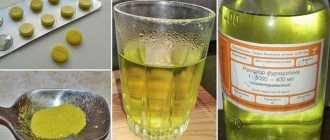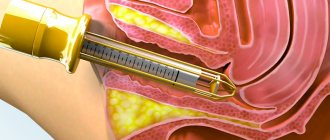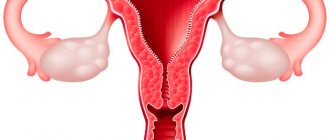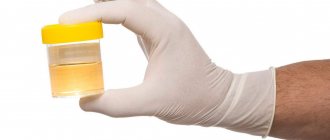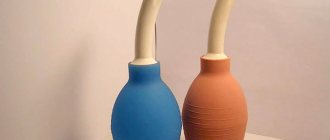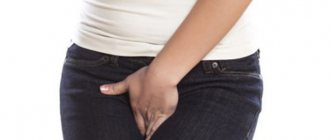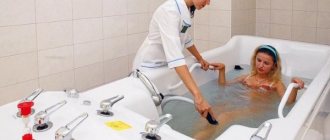The manipulation, which is called irrigation, has another more common name - douching. This treatment procedure is widely used in gynecology to treat many diseases. Various medicinal solutions and infusions of medicinal herbs are used as a remedy. Sometimes this procedure is prescribed for preventive purposes.
How to rinse the vagina correctly without damaging its mucous membrane? Most often, vaginal irrigation has to be carried out as prescribed by a doctor independently and at home. Usually a woman does douching in a way that is convenient for her. But for carrying out this manipulation there are rules, as well as contraindications. Although there are not so many situations when it is impossible to wash the vagina.
How to wash the vagina? First of all, before douching, you need to pay attention to the concentration of the solution. If you use a douche incorrectly, you can damage the vaginal walls. If the concentration of the solution is incorrect, beneficial microorganisms that normally live in the vagina may die. Then, instead of treatment, you can intensify the inflammatory process.
When and why is douching done?
It is worth understanding that douching is not a hygienic procedure, that is, it is not used to cleanse the walls of a healthy vagina or anus.
For normal hygiene, it is quite enough to simply wash yourself every day using plain water, soap or special products. Therefore, if you do not experience discomfort, you are not bothered by itching or pathological (compared to normal) discharge, as well as burning, then there is no need for this procedure.
In the event that all the above-mentioned signs appear, you should first consult a doctor so that he can determine the cause of the pathology that has arisen. Self-medication can provoke more unpleasant consequences.
Why can't you douche often? Even such a harmless solution as chamomile infusion can wash away all the beneficial microflora and natural lubrication from your mucous membrane. The consequence of this will be a change in pH balance. This, in turn, will lead to the fact that pathogenic bacteria or those that are not typical for this environment will begin to settle or multiply here.
For example, a bacterium such as candida is a common inhabitant of the vagina and perineal area, but various negative changes contribute to its active reproduction, and you observe cheesy discharge, itching, burning and inflammation.
In addition, constant use of chamomile solution can cause you an allergic reaction even when nothing like this has been observed before. Remember also that the more often you insert plastic tips inside, the greater the chance of injuring delicate tissues.
Hygiene measures
In addition to the listed methods of relieving itching, positive results can be achieved by simply observing hygiene requirements. They may be associated with a temporary renunciation of certain habits and pleasures, but they are certainly necessary to improve the general condition:
- mandatory, daily, three times washing;
- refusal of cosmetics and allergenic detergents for intimate areas;
- use of natural linen, cotton or linen;
- use of disinfectant powders;
- review of the diet with the exclusion of spicy and fatty foods;
- abstinence from sexual intercourse.
The listed methods for relieving itching and discomfort are not an exhaustive guide to action. In all cases, a preliminary consultation with a doctor is necessary to help avoid unpleasant consequences and achieve the desired result.
Who is this procedure contraindicated for?
- As we have already found out, it is forbidden to carry out such an intervention simply as a cleanser;
- You cannot prescribe it yourself or not follow the terms prescribed by your doctor;
- You should not douche before visiting a doctor. The specialist must see the full picture of the disease;
- Among the contraindications, I would separately mention those inventive individuals who, with the help of douching, try to prevent STDs or unwanted pregnancy.
Usually, of course, chamomile is not used for this, but more serious means such as soda, potassium permanganate or apple cider vinegar are used. However, all these methods are completely untenable and do not cope with the task assigned to them.
How to avoid female diseases?
Prevention, diagnosis and treatment of gynecological diseases should become an integral part of the life of a modern woman who takes care of herself and values her health. That is why you should not put off visiting a gynecologist, even if there is no reason to worry.
Almost every woman has resorted to a procedure such as douching at least once in her life. Many people try to prevent unwanted pregnancy, contracting sexually transmitted infections, or simply use douching as a preventative measure. Is it really necessary?
Is douching effective in treating inflammation and other sexual diseases?
There is no clear answer to this question. However, your doctor will insist that douching alone will not solve such problems, and often it is only an element of complex treatment. It is clear that chamomile (and other drugs) will not be able to kill the virus of chlamydia, ureaplasmosis or trichomoniasis, and they will not help with hemorrhoids.
The fact is that viruses are not only on the surface of the mucous membranes, but penetrate deep into the cells, so douching as a single procedure will not only not solve these problems, but will only worsen them. Moreover, in such a situation, you can only use the special medicinal drugs that I mentioned above.
Douching will also not help you with fibroids or endometriosis. In this case, the source of the pathology is a changed hormonal background, so washing or irrigation will not have any effect. Today we looked at just some of the advantages and disadvantages of douching with chamomile. But there are still a lot of natural methods that can and should be used at home.
I hope that you found in this article all the answers to the questions that have been bothering you for a long time. If you were interested, stay on this wave, share the knowledge you gain with your friends. Tomorrow will be even more interesting.
Douching is an accessible treatment method that allows you to influence the vaginal mucosa, the vaginal segment of the cervix, and also allows you to reflexively affect the tissue of the uterus. This treatment method allows you to dissolve and wash away the pathological contents, disinfect vaginal tissues, and also act locally on the mucous membrane with drugs.
There are a huge number of gynecological diseases that the douching procedure can help you cope with. Their frequent diagnosis is associated with the complex anatomical features of the female reproductive system. In the vagina and cervix, there are a large number of depressions and pockets. When the environment is disturbed, tissues become inflamed and eroded. All this leads to the development of severe pathological processes.
Doctors recommend resorting to the douching procedure in the following clinical cases:
- For candidal colpitis.
- With endocervicitis.
- For thrush.
- Diagnosis: cervical erosion.
- For chronic inflammatory phenomena in the structures of the uterine appendages.
- For chronic adhesive pelvioperiotonitis.
It is not recommended to carry out the procedure for representatives of the weaker half in the following situations:
- For bleeding from the uterus.
- For inflammatory phenomena in the tissues of the genital organs, which have an acute stage of progression.
- During menstruation.
- During pregnancy.
Not all female representatives have an idea of how to douche correctly. The gynecologist must explain and teach the procedure. But if even after this the patient still has questions, this article will give detailed answers to them.
Characteristics of the method
Clinical studies conducted at gynecological centers show that a five-day course of douching is sufficient to get rid of the symptoms of candidiasis.
- In the first days, doctors recommend douching 2 times a day: in the morning, immediately after sleep and in the evening, before bed.
- The procedure is carried out 2 times a day for 3 days, after which they douche only in the evening.
- After 5 days, you cannot completely abandon the procedure, but it is carried out once a week to maintain the achieved result.
- At home, a regular bulb syringe is used to irrigate the vagina. In specialized centers, a special tool is shown for these purposes - Esmarch's mug. Before each manipulation, the tip is washed and boiled.
A syringe is a personal hygiene product, so another person cannot use it to protect themselves. In a situation where the specified instrument has begun to be used for the douching procedure, under no circumstances should it be used for other purposes, for example, for enemas or microenemas.
Options for douching in a clinical setting
There are clinical cases when a pregnant woman is still prescribed douching, then the procedure is carried out in a specialized center, under the supervision of specialists. In hospitals, the manipulation is performed on women with excess body weight, because on their own, at home, they simply cannot perform it efficiently and correctly.
Pregnant women are not recommended to douche for the following reasons:
- Increased risk of losing a baby in the first trimester.
- Possibilities of premature birth in the last trimester.
- Possibility of air entering the uterus and the development of an inflammatory process.
- Washing out beneficial microbial strains from the vagina and reducing the natural protective mechanisms of the mucous membrane.
- High probability of mechanical damage and infection of tissues.
To avoid douching during pregnancy, you must follow all the gynecologist’s recommendations for the prevention of gynecological pathologies, and the pregnancy must be planned.
What else is worth paying attention to
Vaginal irrigation will not always bring positive results, even if there is no menstruation. In some cases, it is prohibited because it can cause other health problems.
- Pregnancy period. Any interference with the natural processes occurring in the uterus during pregnancy can provoke premature birth or miscarriage;
- Inflammatory process in the acute stage. This case suggests the possibility of the problem getting worse.
- For some time after a recent birth, miscarriage, curettage, or abortion, it is recommended not to douche. You need to wait for the uterus to restore its functions, and only then use this method of therapy.
- Myoma and endometriosis are also prohibitive diseases for irrigation. Firstly, douching does not cure in this case. And secondly, this can also cause harm and make the disease worse.
To sum it up, we can highlight the main thing - douching is a hygienic procedure and can only be done when prescribed by a doctor. You should not carry out the procedure unless necessary, otherwise you may disrupt the vaginal microflora. There are no indications for its use - no irrigation. Everything is easy and simple.
Stages of douching step by step
Douching in gynecology is most often performed with a soda solution or an infusion (decoction) of medicinal herbs. Let's look at how to do douching correctly. Patients must adhere to the following rules:
- The solution is prepared a few minutes before manipulation. It should be warm, but not hot.
- Disinfect the tip of the instrument. To do this, wash it under running water and then boil for several minutes.
- Squeeze the instrument bulb as much as possible to release all the air.
- The syringe is filled with medicine.
- Direct implementation of the procedure.
A woman douches either over the toilet or in the bathroom.
- Before this, you need to take the correct position : tilt your torso forward and bend your knees.
- During these manipulations, the patient should be as relaxed as possible. Therefore, experts recommend other positions: sitting on the toilet with your legs spread, or lying in the bathtub with your pelvis slightly elevated.
- To insert the tip of the syringe, the woman carefully spreads her labia with her fingers, inserts the instrument and slowly releases the solution. After this, be sure to wear clean cotton underwear.
The douching procedure cannot be chosen for self-hygienic care. Before you decide to do this, you need to consult with a specialist, because the process can have negative consequences.
Bath compositions
For irritation of the perineum and anus, healing baths are a good way. For these purposes, you can use a bath or a regular basin with sufficient volume. Typically these are solutions based on potassium permanganate or components of plant origin:
- calendula and chamomile infusions;
- oak bark;
- collection of string.
Potassium permanganate
Since Soviet times, potassium permanganate has become an almost universal sedative and disinfectant. It really has a soothing effect on skin rashes, including intimate areas. Before the procedure, it is necessary to dissolve the permanganate at the rate of one teaspoon per five liters of volume. A fifteen-minute bath is usually enough to relieve anxiety.
Oak bark
The calming effect is characteristic of solutions based on crushed oak bark. To take a bath, prepare a decoction of a kilogram of bark per four liters of water. After boiling, the composition is kept on fire for 20 minutes, then filtered.
Collecting a string
A well-chopped dry collection of string (50 grams) is poured with a liter of liquid. The solution is boiled in a water bath and kept for 5 to 10 minutes. The resulting decoction is infused for 40 minutes, then poured into a basin or bath. Apply in the morning and in the evening for up to five days.
What remedies to use and possible complications
Vaginal douching is most often prescribed for erosions, chronic inflammation in the tissues of the vagina and uterus, as well as for fungal invasion. As a result of the procedure, the contents are washed out of the vagina, significantly reducing the concentration of lactobacilli. A low concentration of lactobacilli leads to the active proliferation of other pathogenic microorganisms. This is why gynecologists do not recommend frequently resorting to douching, and some even prohibit this method.
If the patient is diagnosed with thrush, then it is recommended to use a warm infusion of chamomile or calendula or soda (1 glass of water + 1 teaspoon of baking soda) as a douching solution. Douching is not the primary treatment for fungal infections. The treatment regimen must include antifungal suppositories. For candidiasis, a solution of citric acid is also used. To prepare it, dissolve 1 tsp in 1 liter of warm water. citric acid. This solution is also effective for trichomoniasis. An acidic solution has one drawback - sperm activity slows down, which makes conception impossible. Some representatives of the fair sex use this method to prevent unwanted pregnancy. The acidic environment in the vagina is also maintained by douching with hydrogen peroxide.
With thrush, there is an acidic environment in the vaginal area. To shift it to the alkaline side, you can use ready-made solutions that can be purchased at any pharmacy chain: Chlorhexidine or Furacilin. These solutions have one positive quality. They are sold in special containers equipped with a spout. Therefore, there is no need to buy a syringe bulb as well.
What products are best not to use for douching?
Gynecologists do not recommend using the following solutions for douching:
- Potassium permanganate solution. This substance, especially at high concentrations, can cause burns to the delicate mucous membrane; the mucous membrane becomes dried out, which leads to slight tissue trauma. In addition, as a result of douching, the natural microbial environment is washed away.
- A solution of hydrogen peroxide and soda. If the solution is made incorrectly, a high concentration of the active agent can lead to mild inflammation, burns, and even the appearance of eroded areas.
For any gynecological diseases, you cannot self-medicate using the douching method, no matter how correctly you perform it. Only a doctor can prescribe this method of treatment and select a solution of the required concentration for this. Self-medication can end disastrously, causing serious consequences for the female body, the treatment of which will last a long time and is not always effective.
Gynecologists have two opposing opinions regarding the benefits and harms of douching for the female body. Some are categorically against such a procedure, others consider it advisable, but only in specific cases as part of complex therapy for certain diseases of the female genital organs.
What is douching and how to douche correctly?
Douching - what is it? This is the deliberate introduction of various solutions into the vagina. To carry it out, you usually use a pharmaceutical rubber bulb with a tip, a special syringe, for irrigation you can use an Esmarch mug, and some women also use disposable 20 cc syringes without a needle for douching. So how to do douching?
Basics of proper douching
- Water. The water for diluting the solution should be warm, not cold and under no circumstances hot.
- Duration of treatment. 3 – 5 days, maximum 7, otherwise you can “wash” everything until it is completely sterile, and long-term douching promotes the desquamation of vaginal epithelial cells that have glycogen, which can slow down the restoration of normal microflora.
- Duration of the procedure. Douching time is usually 10-15 minutes.
- Frequency of douching. Usually the gynecologist gives a clear recommendation for douching. A common scheme is that at the beginning, douching is done 2 times a day in the morning and in the evening, when improvement occurs - only in the evening.
- The liquid must not be supplied under pressure. If the liquid flows under strong pressure, it can more easily penetrate beyond the cervix, which is fraught with the occurrence of inflammatory processes in the woman. It is easier to control the water flow if you use an Esmarch mug (irrigator) - this is a balloon, a plastic tube and a tip, rather than a syringe, in which the tip is connected directly to the bulb. If you use a syringe, the container should be squeezed, and the liquid will still flow under pressure. But in Esmarch's mug, the flow pressure can be controlled by slightly lowering or raising the rubber vessel.
- Processing the douching device. After each procedure, the tip, pear, Esmarch mug should be thoroughly rinsed, and before each use, it is also advisable to boil the tip for 1-2 minutes.
- Use the attachments for this purpose only . If you start using a bulb, syringe or other device for this procedure, never use it later for an enema or micro-enema; it should only be used for douching. If you use a disposable syringe without a needle, do not reuse it.
- Be careful . The procedure should be carried out slowly, carefully, carefully. When inserting the tip, do not apply significant force. The procedure should not cause pain; if you are in pain, then you should wait a little and try to relax. With sudden, rapid movements there is a risk of damage to the walls of the vagina or bladder.
- Comfortable position. The most convenient way to do douching is to lie in the bathtub with your feet on the edges of the bathtub. You can also douche while sitting on a toilet seat, while raising the filled mug slightly above your waist. In this case, the douching solution will flow in and out of the vagina under the influence of gravity alone and the liquid will not be able to enter the cervix.
- Preparation of solutions for douching. When preparing solutions, the exact proportions of dilution of chemical compounds such as boric acid, potassium permanganate, soda, hydrogen peroxide should be observed, since exceeding the permissible concentration causes burns to the vaginal mucosa, which only worsens the condition. When using infusions of medicinal herbs, such as oak bark, celandine, chamomile (pharmaceutical, medicinal properties), calendula, tea tree, wormwood, sage, yarrow, eucalyptus, St. John's wort, string, nettle, bay leaf, hogweed, decoctions and Use infusions immediately after they are ready.
In the hospital
If the douching procedure is carried out in a hospital setting, then an Esmarch mug is used, which consists of a container and a tube connected to it with a plastic tip. The container is filled with the required amount of solution. Then the entire system is suspended on a special tripod at a height of ten centimeters from the chair.
The external genitalia are pre-treated; for this purpose, a solution of furatsilin or distilled water is used. The tip is inserted into the vagina to a shallow depth, not exceeding 7 centimeters. The pressure of the stream going into the vagina should be small.
Is it possible to do douching at all?
You cannot use douching for the so-called “cleaning of the vagina”, getting rid of discharge. The female body cannot be “dirty”. Some women douche quite often in order to, as it seems to them, remove unnecessary discharge. This is not only impractical, but also unsafe.
The human body, and the vagina in particular, has the ability to self-cleanse; the viscous protective secretion secreted by the vaginal mucosa removes itself and is a natural cleanser. Therefore, to maintain the microbiological cleanliness of the vagina, a woman does not require any additional action other than a daily shower and washing.
If there are no unpleasant sensations, such as burning, itching in the vagina, or unpleasant odor, then preventive douching cannot be practiced. In this case, it is necessary to determine the cause of the discomfort that appears, most often these are infections, bacterial vaginosis, candidiasis, etc., which is impossible to determine on your own without a specialist and specific tests. Therefore, it is not advisable to self-medicate in the form of douching without a thorough diagnosis.
When not to douche
- You should not douche simply to cleanse the vagina of discharge.
- You cannot start douching on your own without the recommendation of a gynecologist, without clarifying the reasons for any discomfort; self-medication can only worsen the situation.
- You should not douche on the eve of a visit to the gynecologist, as the test results will be unreliable.
- In case of acute inflammatory processes of the female genital organs - acute adnexitis (see inflammation of the appendages - symptoms and treatment), endometritis, douching should absolutely not be done.
- During periods when women are menstruating, during pregnancy, 40 days after childbirth, the period after an abortion is the time when douching is contraindicated.
Contraindications and side effects
The main contraindications for performing this therapeutic and prophylactic manipulation include:
- period of bearing a child;
- menses;
- in the presence of specific discharge from the genital tract until its nature is established;
- in the first 10 days after an abortion;
- in the presence of bloody discharge from the genital tract of unknown etiology;
- for oncology of the reproductive system or bladder.
Frequent irrigation of the mucous membrane of the genital tract is fraught with the development of such complications:
- vaginal dysbiosis;
- endometriosis;
- endometritis;
- bacterial vaginitis;
- salpingitis.
Frequent douching is not safe
- Frequent douching washes out the natural protective lubricant, changes the pH, disrupts the microflora in the vagina, promoting the rapid proliferation of pathogenic microorganisms; in terms of destructive power, this is equivalent to the uncontrolled use of systemic antibiotics.
- Also, constant douching increases the risk of developing allergic reactions.
- Frequent douching increases the risk of injury to the bladder, cervix, and irritation of the vaginal walls.
- Numerous studies conducted by international gynecological associations have established a connection between frequent douching and an increase in the development of various inflammatory diseases of the female genital organs, such as:
- salpingitis
- bacterial vaginitis
- endometriosis
- endometritis
Since excessive rinsing can free the cervix from the protective plug, dissolving it, various infections quickly enter the uterine cavity through the cervix. According to the results of these studies, 70% of women suffering from chronic diseases of the reproductive system had the habit of douching once a week.
Features of vaginal douching
The procedure for irrigation of the vaginal mucosa is always accompanied by a certain risk of reflux of liquid contents into the cervical canal and the uterus itself, with the subsequent development of an infectious and inflammatory process. That is why douching is strictly contraindicated for pregnant women, regardless of gestational age.
If candidiasis or other infectious lesions of the genital tract develop during pregnancy, the expectant mother is recommended to consult a gynecologist and undergo safe drug therapy.
During menstruation
During the period of menstrual flow, there is an expansion of the lumen of the cervical canal, resulting in an increased risk of infection in the uterine cavity with the subsequent development of acute endometritis or salpingitis. That is why douching with solutions during menstruation is prohibited.
For virgins
This procedure can be performed on virgins with the development of vulvovaginitis, but irrigation can only be performed by the attending gynecologist using a special thin catheter.
For therapeutic purposes, a solution of potassium permanganate is used, and the depth of insertion of the catheter is no more than 3 cm. Douching on their own is contraindicated for virgins.
Douching during pregnancy
Obstetrician-gynecologists categorically prohibit douching during pregnancy for the following reasons:
- During pregnancy, the number of blood vessels on the inner surface of the uterus increases, and accordingly, the risk of air entering through the cervical canal during the douching procedure increases.
- Douching can deliver chemicals to the fetus that can have a negative effect on the growing body, and also increases the risk of damage to the amniotic sac.
- The risk of thrush - vaginal candidiasis, bacterial vaginosis (discharge with a fishy smell) and other vaginal infections due to douching during pregnancy is very high and this can provoke transmission of infection from mother to fetus, which increases the likelihood of premature birth and other pregnancy pathologies.
Is douching after intercourse a contraceptive and protection against STD infections?
Many women believe that douching after sex with various acids helps protect against unwanted pregnancy. Neither apple cider vinegar, nor citric acid and juice, nor mineral water, nor salt and soda are effective contraceptives. Douching cannot prevent pregnancy in any way. Even if a woman immediately after sexual intercourse rushes to rinse the vagina, at this time some of the sperm will already penetrate the uterus; this is a very fast process, which cannot be avoided.
As for douching as protection against sexually transmitted infections, this is also an unreliable remedy. If a woman has had unprotected sex with a dubious partner, then douching can be done with a solution of the antiseptics Miramistin and Chlorhexidine. However, there are no convincing studies confirming 100% prevention of STIs by such douching. Also, you should not abuse this method of preventing sexually transmitted infections; you can get a burn to the vaginal mucosa.
This emergency procedure, of course, is best done, but no later than two hours after contact. To do this, you need to thoroughly toilet the genitals and douche with Miramestin for 15 minutes, using 10 ml of solution. Moreover, after an hour this procedure must be repeated. If after this measure you still have doubts, unusual discharge or discomfort appear, do not delay your visit to the doctor. High-quality condoms are internationally recognized as the best prevention of any sexually transmitted infections and a highly effective barrier contraceptive .
Products for internal use
In addition to external use, traditional medicine compositions are taken orally. These are the same plant-based tinctures and decoctions, some dairy products with antipruritic properties. Among them may be:
- herbal mixtures;
- basil infusion;
- yogurt.
Herbal mixtures
The recipe for a soothing herbal tincture is a mixture of string, birch leaves, St. John's wort, chicory, calendula and hop cones. Four tablespoons of the listed components are poured into a liter of boiling water and infused for several hours. It is recommended to take one glass (200 g) three times a day, half an hour before meals.
Basil infusion
It is better to use ceramic dishes for brewing. Two tablespoons of dry collection are poured with half a liter of boiling water. The tincture is kept until the temperature reaches room temperature. Take 100 grams before breakfast, lunch and dinner.
Dairy products
An excellent way to restore mucous membranes are dairy products with a high content of beneficial bacteria. In addition to yogurts, it is recommended to take Lactobacillus and Acidophilus, which have similar properties. In addition to internal use, they can be used for compresses on affected areas of the body, including the perineum.
Douching for inflammation and sexually transmitted infections
As a monotherapy, douching in the treatment of inflammatory diseases of the female genital organs is definitely ineffective, since any gynecological diseases require complex therapy, both local and systemic. It is foolish to hope to cure serious sexually transmitted infections or inflammatory processes only by douching.
For many women, this method of treatment as douching seems very accessible and cheap, a good alternative to antibiotics, without which treatment of sexually transmitted infections is impossible. However, the causative agents of chlamydia, ureaplasmosis, mycoplasmosis, and trichomoniasis can be located intracellularly, deep in the tissues of the human body, therefore, external exposure to medicinal fluids is practically ineffective. In addition, by changing the normal composition of the vaginal microflora during douching, the risk of further progression of these diseases increases.
There are special medications for douching that have antiseptic and antimicrobial properties, such as Miramistin, Chlorophyllipt, Vagotil. Despite the fact that these are concentrated antimicrobial solutions, using only these agents, it is impossible to cure any disease of the female genital area. They are used to prevent infection after accidental unprotected sexual intercourse, only as soon as possible after coitus, then the risk of contracting an STI is reduced by 70%. However, this method of protection against infection such as douching cannot be used on an ongoing basis.
Douching for fibroids
The development and growth of uterine fibroids is provoked by a hormonal imbalance in a woman’s body, so local effects such as douching with drugs or medicinal plants for fibroids are ineffective.
Douching for endometriosis
The situation is similar with endometriosis; this disease also depends on the action of female sex hormones and treatment of endometriosis should be aimed at normalizing the hormonal status of a woman. There is no convincing evidence of the effect of douching with medicinal herbs for endometriosis; moreover, there is an assumption that, on the contrary, douching promotes the spread of endometrial cells outside the uterus, which precisely forms foci of endometriosis.
Douching for cervical erosion
It is a known fact that cervical erosion occurs as a result of infectious diseases of the female genital organs, frequent abortions (consequences), changes in a woman’s hormonal levels, therefore, taking into account all of the above, douching for this pathology is also very doubtful in terms of effectiveness.
Douching during and after menstruation
It is strictly forbidden to douche during menstruation. Although some women find it logical to perform special vaginal cleaning after or during menstruation, it is dangerous to do so. During menstruation, the cervix is slightly open and the risk of infection entering the uterus increases significantly.
Douching with soda for conception is not justified by anything
The normal microflora of the vagina creates the most favorable environment for the successful advancement of sperm, and douching with baking soda, from a scientific and practical point of view, cannot in any way contribute to the speedy onset of pregnancy. Moreover, washing away the optimal environment for conception only reduces the chances of successful fertilization.
At home
At home, a similar procedure is performed using a syringe, since rarely does anyone have an Esmarch mug, which is very inconvenient to use without outside help. The syringe used for irrigation is relatively small in size, so using it at home is much more convenient.
The syringe consists of a rubber bulb and a plastic tip. The procedure is usually performed in a bathtub, in a lying position with knees bent and relaxed. The entire procedure requires about 250 milliliters of solution.
The conditions are the same. It is necessary to use the product in the correct concentration. The liquid should be at room temperature. If you take a hot solution, you can burn the mucous membrane. A cold solution can trigger the onset of an inflammatory process.
Doctors recommend that when irrigating, lie in an empty bathtub and throw your feet on its sides. In this position of the body, it will be most convenient to insert the douche into the vagina. It is quite possible to carry out the procedure while standing over the toilet, but it is not as convenient as in the bath. In this case, you need to take a more comfortable position, for which you need to bend your legs a little and lean forward a little. In this case, the tip is inserted to a depth not exceeding five centimeters.
The tip must be inserted very carefully. When the mucous membrane of the wound is damaged, inflammation occurs very quickly, which can cover a large area of the vagina. The solution and syringes are very slowly introduced into the vagina. After the liquid enters the vaginal cavity, the muscles must be contracted for a while and then, on the contrary, relaxed.
The flow coming from the syringe of liquid is regulated by the force of pressing. Too much pressure can cause fluid to enter the uterine cavity, which is extremely undesirable. The fluid, although it has some beneficial properties, will inevitably cause inflammation of the uterus, which is much more difficult to treat than vaginitis. In this case, treatment with irrigation will do more harm than good. Therefore, everything must be done carefully, slowly.
After each procedure, the syringe must be thoroughly washed and disinfected. You can rinse it inside with a solution of potassium permanganate. It is recommended to treat the outside of the syringe with alcohol, but if this is not available, you can simply pour boiling water over it.
You must have two syringes in the house. One should be used for irrigation, the other for enemas. This rule must be strictly followed, since no matter how thoroughly the syringe is disinfected, the likelihood of pathogens remaining is quite high.
Using the same syringe for two different procedures can introduce an infection, for example, from the intestines to the vagina. It is especially dangerous to bring E. coli into the vagina. This microorganism is classified as opportunistic, but once in the vagina, it can cause severe inflammation. These bacteria are not characteristic of the vaginal microflora.
